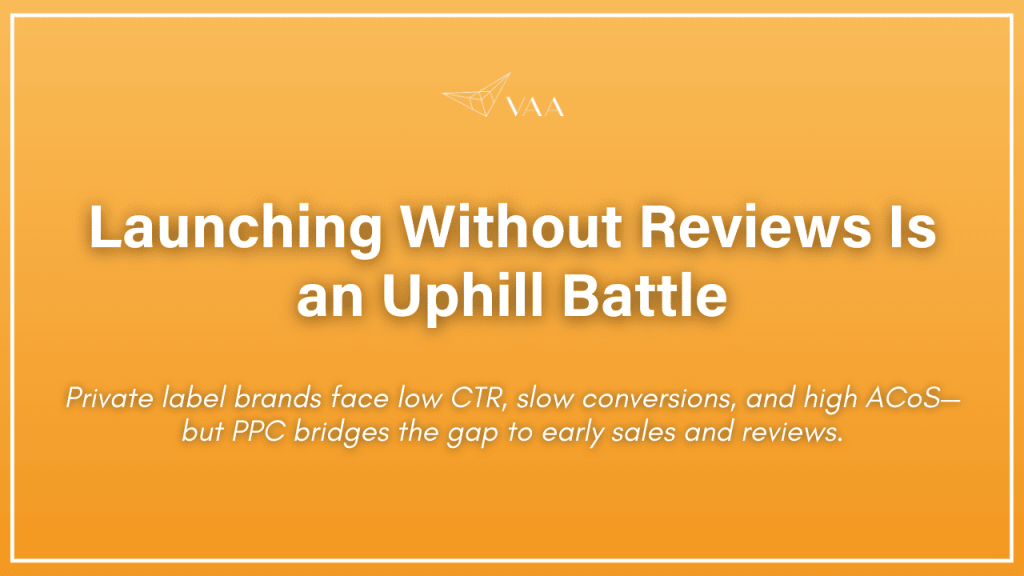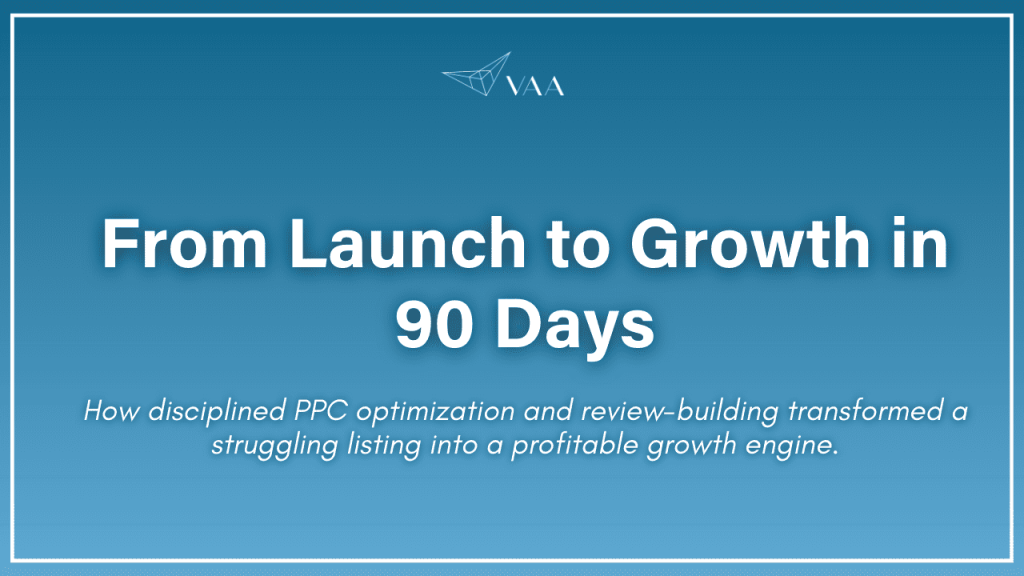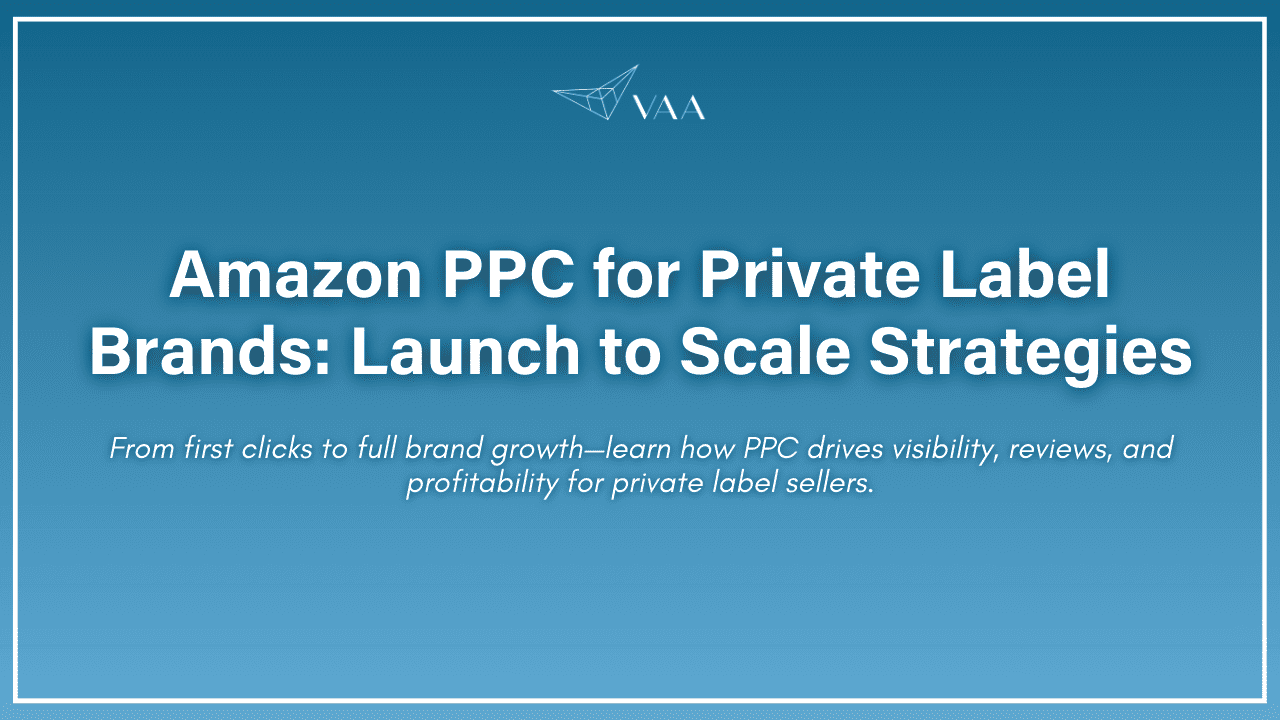Launching a private label brand on Amazon can feel like stepping into an arena dominated by giants. Established brands enjoy the advantage of loyal customers, strong organic rankings, and hundreds of reviews that reassure shoppers instantly. By contrast, private label sellers start with none of that. What they do have, however, is flexibility and the ability to craft a brand story from the ground up. This is where an experienced
Amazon PPC specialist comes in.Amazon PPC (Pay-Per-Click) is often the bridge that closes this gap. It provides the visibility needed to compete, generates the early traffic that drives reviews, and accelerates the growth curve for new products. Yet moving from launch to scale is not a straightforward journey. This guide walks through each stage of the journey, showing how private label entrepreneurs can use PPC not just to advertise, but to build lasting brand equity.
Why Private Label Brands Face Unique PPC Challenges
Private label brands are often tempted to compare themselves to established players, but the playing field is not equal. Well-known brands already benefit from customer trust, organic ranking, and thousands of reviews. For new sellers, the challenge of working with
Amazon PPC is uphill.One of the first hurdles is click-through rate. Shoppers scrolling through Amazon search results naturally gravitate toward familiar names or listings with dozens of glowing reviews. A brand-new product, even with sharp images, struggles to earn that first click. And even when shoppers do click, conversion rates lag behind competitors until reviews start to accumulate.Budgets are another point of friction. Unlike big brands that use PPC primarily to defend market share, private label sellers use ads to create demand. Every click is an investment in discovery, not just a bid to capture existing demand. That means money drains faster at the start, often with little to no profit to show for it.This reality is why expectation-setting is so critical. Private label PPC is not a get-rich-quick lever, it is a market-entry strategy. Profits will come, but only after data, reviews, and brand recognition catch up.

Building Brand Authority from Zero
Authority on Amazon is built on two pillars: presentation and proof.Presentation is what sellers can control immediately. A polished product listing signals professionalism and reassures shoppers that the brand is credible. High-quality images, lifestyle shots, and clear product descriptions do not just inform the shopper, they build trust. Similarly, bullet points that emphasize benefits rather than just features help connect the product to the shopper’s needs.
In this case, presentation includes:- High-quality product images with lifestyle use-cases.
- Benefit-driven copy that solves customer pain points, not just lists specs.
- A+ content or brand story modules that make your listing look professional.
Proof is built through reviews. They are the social currency of Amazon. Shoppers rely on them as a trust signal, and products without reviews rarely convert at the same rate. That is why many sellers see PPC as more than a sales driver, and an Amazon PPC specialist can come in to help. Each early sale brings not only revenue, but also the chance to build the credibility needed for future conversions.For example, if you launch a premium insulated bottle at $29.99 with zero reviews, you might see shoppers clicking out of curiosity but not purchasing. After just 10 to 15 reviews, that same listing can double its conversion rate, turning ad clicks into sales more efficiently.Over time, as reviews accumulate and social proof strengthens, CTR and CVR naturally improve. This is the turning point
when PPC starts to feel more efficient, because the same number of clicks produces more sales. Private label sellers should think of the early stage as paying to “prime the pump.”
ROI Expectations and Realistic Timelines
Approaching private label PPC with the right expectations is also important. If the goal is immediate profit, frustration will follow. A more realistic framework is to think in phases.In the first 30 days, campaigns should be judged on traffic generation rather than profitability. Impressions and clicks matter most, because they provide the raw data needed to optimize later. ACoS will likely be high, sometimes 40 to 50 percent, but this is not a red flag.Between days 30 and 60, sellers can start trimming wasted spend. This is when negative keywords come into play and when the budget should shift toward search terms that are already converting. During this phase, reviews are beginning to show up on the listing, which lifts conversion rates and makes ads more efficient.By days 60 to 90, campaigns typically begin to stabilize. The data pool is larger, the review count is higher, and Amazon’s algorithm has enough signals to favor the product in search placements. ACoS trends downward, TACoS starts to balance, and campaigns feel less volatile. This is the stage where profitability becomes realistic, provided the earlier groundwork was done correctly.Patience during this period is critical. Sellers who pause campaigns too soon often stall their own momentum, missing the chance to compound on the investments made in the early phase. Having an Amazon PPC expert who has all the
skills and knowledge of tools can help scale businesses better.
Keyword Research & Competitive Intelligence
A well-built PPC campaign stands on the foundation of strong keyword research. Private label sellers cannot afford to guess, which is why many rely on an Amazon PPC Specialist to research, test, and refine keywords. Every dollar wasted on irrelevant traffic eats into already tight budgets.
Steps to build a keyword strategy:- Start with seed terms based on product descriptors, features, and intended use.
- Mine competitors for clues. Look at their listings, bullet points, and repeated terms. Reverse ASIN tools (if you use them) can show what keywords competitors already rank for.
- Use Amazon’s autocomplete to capture long-tail terms shoppers actively search. For example, typing “yoga mat” may reveal “yoga mat thick for home use,” which is highly specific and potentially less competitive.
- Build negative lists early. If you sell a premium product, exclude terms like “cheap” or “discount.” If your product is not designed for kids, exclude “kids” terms.
- Check keyword intent against price point. A $100 kitchen appliance should not target bargain-driven queries.
For instance, a seller launching a $70 chef’s knife may find “best cheap knife” as a high-volume keyword. It is tempting to chase that traffic, but it will likely result in clicks without conversions. Instead, targeting “professional chef knife” or “Japanese stainless knife” will align better with both product positioning and shopper intent.Amazon itself provides valuable hints. The autocomplete suggestions in the search bar reveal what shoppers are actually typing. These suggestions often surface long-tail phrases that are less competitive but highly relevant.
Campaign Architecture for New Brands
Once the keyword set is ready, the next step is structuring campaigns effectively. For new brands, simplicity with intent works best.Sponsored Products should form the foundation. An automatic campaign provides discovery, letting Amazon test which queries align with your product. Alongside it, Manual campaigns for Exact and Phrase match keywords allow you to focus budget where it matters most. A small Broad campaign at low bids can be added for exploratory purposes, but it should remain tightly controlled.Budget allocation is another cornerstone. Setting aside 30 to 50 dollars per day for each core SKU ensures enough data flows in to make informed decisions. Underfunded campaigns simply do not gather enough clicks to reveal patterns.Timing matters with other ad types. Sponsored Brands should be introduced once the product has at least 10 to 15 reviews and Brand Registry approval, since they require strong creative assets and shopper trust to be effective. Sponsored Display is best layered later for retargeting and cross-selling, once there is steady traffic to remarket to.This phased approach keeps campaigns efficient while laying the groundwork for broader expansion. Working with a trained Amazon PPC Specialist can make the journey smoother, giving sellers confidence that their campaigns are being handled by an experienced Amazon PPC expert.
Optimization & Data Collection Strategies
Optimization is not about instant tweaks, but about gradual refinement as data accumulates. Weekly reviews of search terms, bid changes, and keyword graduations turn campaigns into efficient engines, the kind of optimization work best handled by a skilled Amazon PPC expert.The timeline of optimization often looks like this:
- Days 1–14: Monitor but do not overreact. Give campaigns enough time to accumulate clicks and impressions.
- Days 15–30: Start pruning. Pause keywords with 15 to 20 clicks and no conversions, and add negatives to stop wasted spend.
- Days 30–60: Adjust bids weekly. Scale up converting terms, and lower or cut underperformers. Migrate strong search terms into Exact campaigns for more control.
During this stage, watch for signals. A CTR below 0.3 percent suggests your ad may not be relevant to shoppers or that your creative is weak. A CVR below 5 percent could indicate listing issues, poor targeting, or misaligned pricing. Identifying these patterns early allows sellers to adjust both campaigns and listings in tandem.Suppose your ad for a kitchen gadget shows a CTR of 0.25 percent while competitors average above 0.5 percent. This might indicate your main image is not compelling enough. By swapping in a lifestyle photo that shows the product in use, CTR can rise significantly, making campaigns more efficient without changing bids.
Scaling & Expansion Approaches
When campaigns have stabilized and the product has built enough social proof, the focus can shift toward scaling. This is how you ensure your
brand’s growth. Expansion should not be rushed, but introduced when the foundation is strong.Sponsored Brands provide a powerful way to showcase brand identity and multiple SKUs. Once shoppers recognize your name and reviews support your credibility, SB ads become a trust-building tool as much as a sales driver.Sponsored Display opens up retargeting opportunities. Many shoppers browse but do not buy on their first visit. Retargeting through SD keeps your product in front of them, nudging them back to complete the purchase. Cross-selling can also be layered here if you have complementary products in your catalog.Category targeting becomes useful once you have 60 to 90 days of campaign data. It allows you to expand reach beyond exact keywords and into broader audience segments, capturing shoppers who may not have searched your precise terms but are browsing in related categories.At this stage, defending your brand also becomes critical. If shoppers are searching specifically for your brand name, you need to bid on it. Otherwise, competitors can capture the traffic you worked so hard to generate.Scaling is not only about adding new campaigns. It is also about refining creativity. Rotating images, testing headlines, and refreshing A+ content ensures your ads continue to resonate.
Creative testing and automation not only improves results but prevents ad fatigue, which can erode performance over time.

Case Study: From Launch to Growth
To bring these strategies into focus, consider a home and kitchen brand that launched with a single hero SKU, zero reviews, and a three thousand dollar monthly PPC budget.In the launch phase, the brand ran one Automatic campaign and two Manual campaigns targeting about 20 carefully selected keywords. The goal was not profit, but data. As expected, ACoS hovered around 45 percent, high but tolerable given the need to build visibility.By day 45, the product had earned nearly 20 reviews. This was the turning point. The team began cutting wasted spend aggressively, building out a robust negative keyword list, and promoting winning search terms into Exact campaigns where bids could be controlled more tightly.With performance improving and reviews in place, the brand expanded. Sponsored Brands were introduced to highlight the product’s features and reinforce the emerging brand identity. Shortly after, Sponsored Display campaigns were added to retarget shoppers who had viewed but not purchased.By day 75, the changes were visible. ACoS dropped into the low 30s, while sales volume more than doubled compared to the launch month. TACoS steadily declined, reflecting the rise in organic sales that comes when PPC and reviews work together to
boost rankings.The story demonstrates how disciplined execution can transform a product’s trajectory. What began as an uphill battle with no reviews and high ad costs evolved into a more efficient system generating both paid and organic momentum.
Scaling Smarter with Expert Support from VAA Philippines
Private label PPC is not about instant profits, it is about laying the groundwork for a sustainable business. Sellers who approach it with patience and discipline are the ones who succeed. The early phase is an investment in data and reviews. The middle phase is about pruning inefficiencies and amplifying winners. The final phase is where scale becomes possible, supported by brand authority and organic growth.For entrepreneurs who want extra hands to manage the complexity of PPC, listing optimization, and scaling strategies, working with trained
Amazon specialists can make the journey smoother. Teams like VAA Philippines support sellers by handling the details behind the scenes, allowing business owners to focus on the bigger picture of growth.


